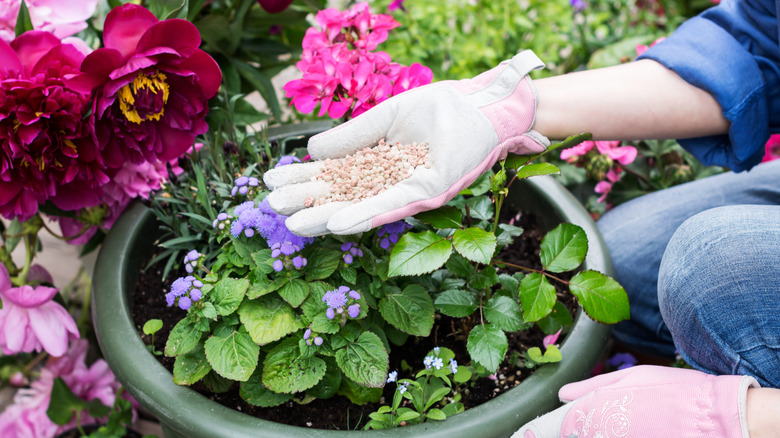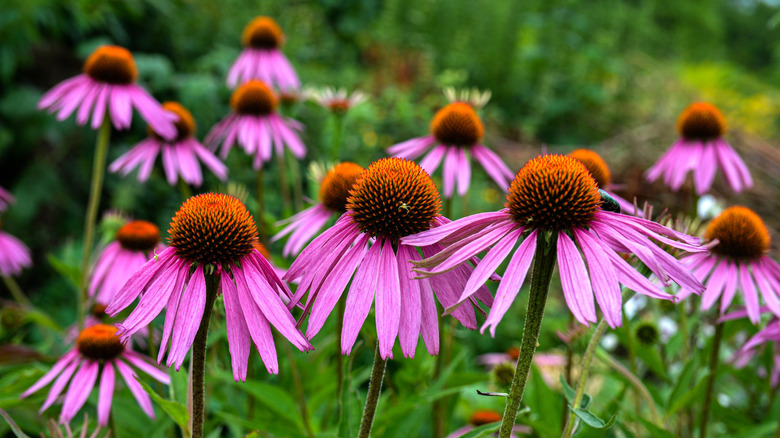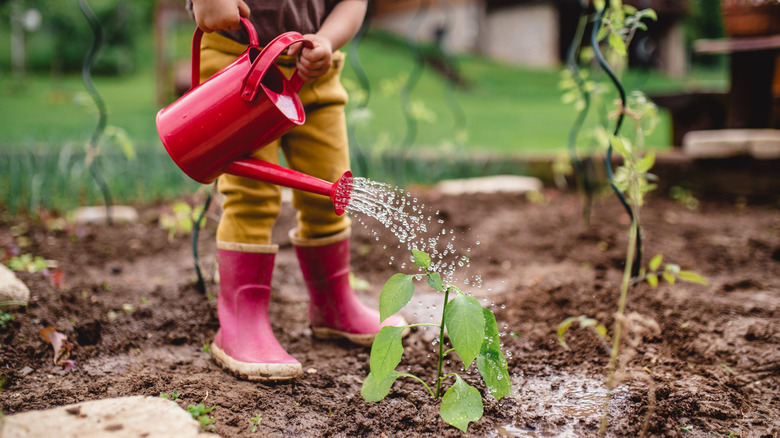Fertilizing Your Garden During A Heat Wave Is A Big Mistake - Here's Why
The summer heat is relentless. The soil is dry by midday, leaves are curling at the edges, and your plants look like they're begging for a break. You've been watering, providing shade, and sticking to your routine, but nothing's helping them. So, you grab your fertilizer, thinking a boost of nutrients might turn things around. But hold on, this is one of the common mistakes you should be aware of when fertilizing your garden. Feeding your garden during a heat wave might feel like the right move, but it can backfire.
Even your healthiest-looking plants won't absorb nutrients under extreme heat. Instead of helping, you risk wasting time, money, and damaging your plants further. High temperatures force plants to switch from growth mode to survival mode, and during that shift, their needs change dramatically. Before you open that bag of fertilizer, here's what's actually happening to your garden in the heat, and what you should be doing instead.
Heat waves shift plants from growth to survival
For most plants, 90 degrees Fahrenheit isn't their ideal temperature. Growth halts, moisture evaporates quickly, and energy is rerouted toward basic survival. You notice wilted leaves, dry edges, or blooms that suddenly stop showing up, but you don't see what's happening underground. During extreme heat, root growth slows or stops entirely, and without active roots, your plants can't absorb nutrients effectively. So, even if you reach for the fertilizer hoping to help, your plants simply aren't in a state to use it.
Worse, you might be setting them back. Most fertilizers contain mineral nutrients, like nitrogen and potassium, which are great for promoting growth under the right conditions. However, when plants are heat-stressed, those nutrients don't get absorbed. Instead, they accumulate in the soil, drawing out moisture and burning sensitive roots. This extra stress can lead to long-term damage, especially if your plant is already struggling to stay hydrated. For this reason, it's best to pause all fertilizing until temperatures get back to normal. Once temperatures drop and your plants start showing signs of growth again, that's the best time to fertilize your plants.
What to do instead
Despite the risks, there are a few cases where fertilizing during a heat wave is okay, as long as you're watering consistently and following the right steps. Container-grown plants, like potted flowers or vegetables, lose nutrients faster due to frequent watering. If you're keeping the soil moist, it's safe, and often helpful, to use a liquid fertilizer, which is easier for roots to absorb in hot conditions. The same goes for annual flowers or summer vegetables, like carrots and beans. If they're actively growing and are well-watered, a diluted, liquid fertilizer can help them thrive.
That said, avoid adding fertilizer during the hottest part of the day. Early morning or evening is best, when temperatures are lower and roots are more likely to take in nutrients without added stress. For everything else, trees, shrubs, evergreens, and perennials, skip the fertilizer and focus on survival support. That means deep, infrequent watering (skip the sprinklers), checking soil moisture, and applying a thick layer of mulch to help retain moisture and insulate the roots. Right now, the goal is to protect your garden and help your plants make it through the heatwave.


